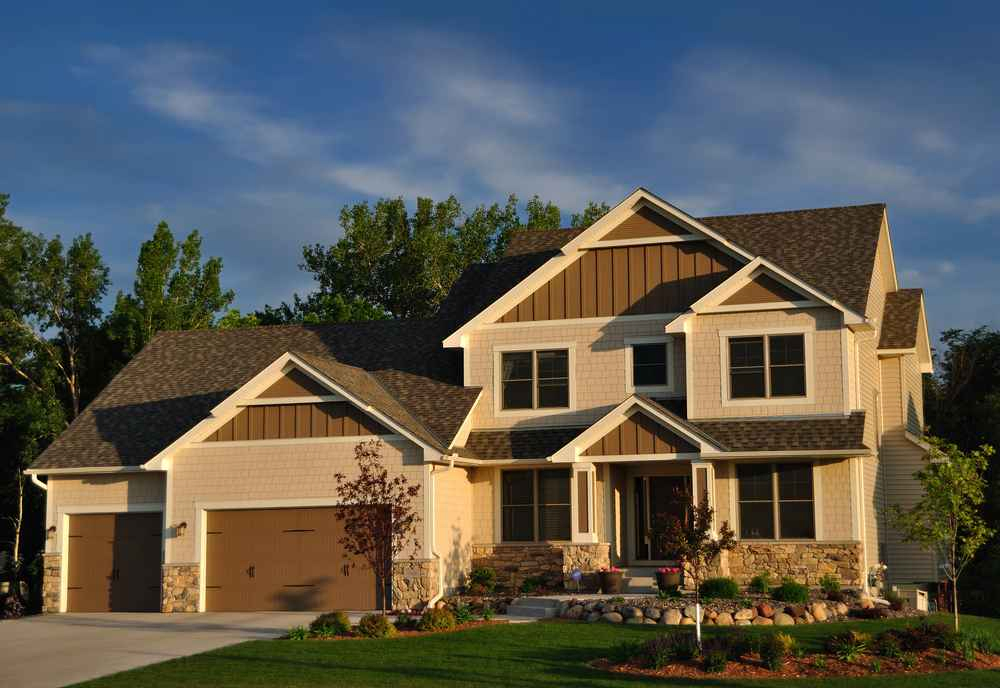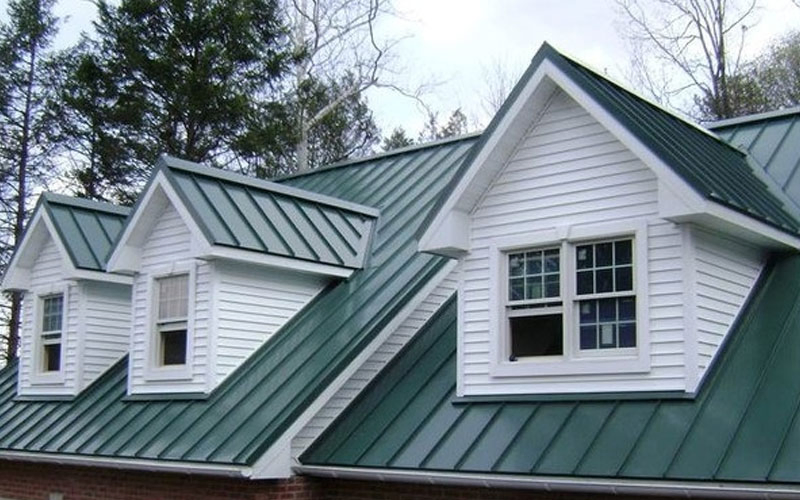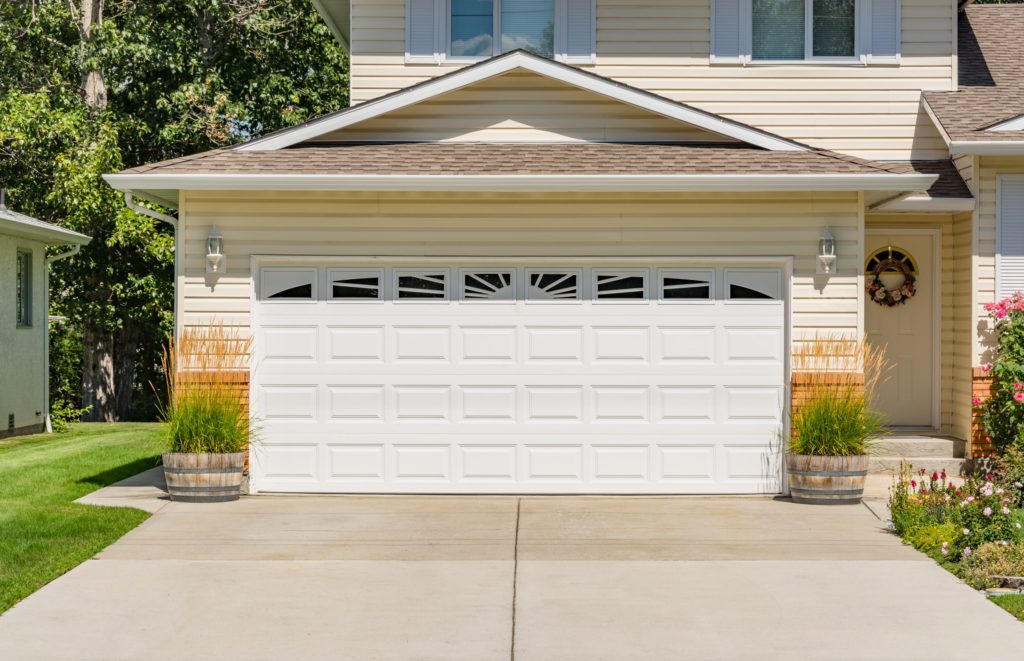Roofing Companies: Protect Your Home from Extreme Weather
As homeowners, we know that protecting our homes from extreme weather is a top priority. Whether it’s harsh winters, scorching summers, or unpredictable storms, the roof of our home serves as the first line of defense against these elements. It not only keeps us safe and comfortable but also protects our precious belongings inside. However, with the changing climate patterns leading to more intense and frequent weather conditions, it has become essential to invest in reliable roofing companies that can withstand these challenges. In this blog post, we will explore various types of roofs and materials that are designed specifically to protect your home from extreme weather conditions. So if you want to ensure your home is well equipped to handle any type of weather mother nature throws its way, keep reading!
The importance of having a strong and resilient roof to protect your home.
A good and reliable roof is an essential aspect of any house or building. Its primary purpose is to provide shelter and protect your family and possessions from the elements. A well-maintained roof can also have a significant impact on the value of your property.
Roofs come in various materials, and it is crucial to choose one that is suitable for your climate and environment. For example, metal roofs are excellent for tropical areas, while asphalt shingles work well in cooler climates. The right material can help your roof withstand extreme temperatures, high winds, and heavy rain or snow.
A strong roof is also necessary to prevent leaks and water damage. Water can damage various parts of your home, such as ceilings, floors, and walls, leading to mold growth, rotting wood, and structural issues. A good roof should have a proper drainage system, gutters, and downspouts to prevent water from seeping into your home.

Roofing Companies
Moreover, investing in a robust roof can save you money in the long run. A poorly maintained roof can lead to high energy bills due to ineffective insulation and ventilation. A good roof helps regulate the temperature in your home and reduces the need for constant heating or cooling.
Safeguarding your roof is crucial for the overall protection and well-being of your home and family. A strong and reliable roof can provide peace of mind, protect your property from weather-related damage, and even increase the value of your home. It’s worth investing in a high-quality roof to enjoy these benefits for years to come.
Understanding the Impact of Extreme Weather on Roofs
Our roofs are the first line of defense against the elements, but extreme weather events can take a toll on even the sturdiest of roofs. Each type of extreme weather poses different risks and vulnerabilities to our roofs. Here are some of the ways that hurricanes, tornadoes, heavy snowfall, and hailstorms can damage roofs.
Hurricanes: Hurricanes are high-speed, intense storms that can cause severe damage to roofs. The strong winds from hurricanes can rip off shingles, tiles, or even metal roofs, leaving the underlying structure exposed. Heavy rainfall from hurricanes can also lead to roof leaks, causing water damage inside the home.
Tornadoes: Tornadoes are characterized by rotating winds that can quickly tear off entire roofs or even collapse weaker structures. Tornadoes can also pick up and hurl debris, such as tree branches and other objects, which can cause additional damage to roofs upon impact.
Heavy snowfall: Heavy snowfall can place a significant amount of weight on the roof, which can lead to structural damage and even collapse. This is a particular concern for flat roofs, which are more prone to accumulating snow than sloped roofs. Additionally, snow and ice buildup can cause leaks and water damage if not cleared promptly.
Hailstorms: Hailstorms can cause significant damage to roofs, especially those made of asphalt shingles or other softer materials. Large hailstones can dent or even puncture the roof surface, causing leaks and other types of structural damage. Hailstorms can also damage gutters, which can contribute to water damage.
In conclusion, extreme weather events can cause significant damage to roofs, leaving the homeowner with expensive repairs or roof replacements. To protect your home, it’s important to be vigilant and proactive about maintaining your roof. Regular inspections, repairs, and replacements can go a long way in ensuring that your roof can withstand extreme weather conditions and keep you safe and dry.
Types of Roofs and Choosing the Right Roofing Material
When it comes to roofing, homeowners should not only consider aesthetics and cost, but also the resilience of the material to withstand extreme weather conditions that may affect their home. Whether it’s heavy rain, high winds, snow, hail, or even tornadoes, investing in a durable roofing material would be worth it in the long run.
Here are some highly recommended roofing materials that offer the best protection against various weather conditions:
- Impact-resistant shingles
These shingles are made of fiberglass blended with asphalt, making them more durable against hail and wind damage. They come in different styles, colors, and patterns such as slate, tile, or wood, making it easy to match the roofing with the style of the home. The drawback, however, is that they are relatively more expensive than traditional shingles.
- Metal roofs
Metal has become an increasingly popular choice for roofing, thanks to its durability, energy efficiency, and aesthetic appeal as well. Metal roofs can withstand high winds, hail, rain, snow, and even fire and are known to last for up to 50 years with minimal maintenance. Metal roofs also come in various styles and colors, making it easier to match with the home’s overall design. On the downside, they can be noisy during heavy rains or hailstorms.
- Synthetic roofing materials
These are made of a composite of plastic and rubber, making them lightweight, durable, and recyclable. They can mimic the look of natural materials such as wood, slate, or tile, while at the same time being resistant to extreme weather conditions. Synthetic roofing materials are easy to install and do not require extensive maintenance like traditional roofing materials. The downside to these materials is that they can be expensive and, just like with metal roofs, can cause noise during heavy rainfall or hail.
When selecting the most suitable roofing material for your home, consider the weather patterns that frequently impact your area, the style of your home, and your budget. Consult with a professional roofing contractor for expert advice on the best material for your specific needs.
Investing in a reliable roofing material is a crucial step in protecting your home and keeping you and your family safe from harsh weather elements. With the right roofing material, you can enjoy peace of mind knowing that your home is well-secured and ready to withstand the toughest of weather conditions.
Reinforcing Roof Structures
Your home’s roof is one of the most important structures when it comes to protecting your family and belongings. It is the first line of defense against extreme weather conditions such as heavy rain, strong winds, and hailstorms. Therefore, having a well-built roofing structure is crucial to ensure the safety and comfort of your loved ones.

Roofing Companies
Fortunately, reinforcing the roof of your home is an achievable task with various techniques available that improve the strength and durability of your roof. One such technique is reinforcing roof trusses. Roof trusses are load-bearing structures that support the weight of your roof. By reinforcing them, you can ensure that they can withstand the pressure of strong winds or heavy snow loads without compromising the integrity of your roof.
Another effective technique is installing hurricane straps. These consist of galvanized metal straps that are attached to the roof trusses and the wall studs of your home. They work by creating a continuous load path from the roof down to the foundation, preventing any uplift of the roof during severe weather conditions like hurricanes and tornadoes.
Using sturdy fasteners is also critical to enhancing the structural integrity of your roof. Nails or screws that are not strong enough to hold your roof in place can easily break during storms or high winds, causing damage to your property. On the other hand, high-quality fasteners, like screw shank nails or ring shank nails, provide a better grip and can keep your roof in place even in the harshest of weather conditions.
Ensuring the structural integrity of your roof is essential to protect your home and family from weather-related disasters. By reinforcing your roof trusses, installing hurricane straps, and using sturdy fasteners, you can enjoy greater peace of mind knowing that your home’s roof is well-prepared to handle any extreme weather conditions.
Enhancing Roof Ventilation and Insulation
Roofing is one of the most important components of any house or building. It is often exposed to the elements, which include the scorching heat of the sun, high humidity, and extreme temperature fluctuations. These conditions can cause significant damage to the roof structure and the underlying materials if not properly managed.
One effective way to protect roofing from harsh environmental conditions is by ensuring proper ventilation. By providing adequate ventilation, you can ensure that hot and humid air is expelled from your attic or roof space, allowing fresh and cooler air to enter. This helps regulate temperature and humidity levels within your home, preventing moisture buildup, and reducing the risk of mold and mildew growth.
Insulation also plays an important role in protecting your roof. Properly insulated roofs help regulate temperature and humidity levels, keeping heat inside during cold weather and outside during hot weather. This not only protects the roof and underlying materials but also helps to save on energy bills by reducing the need for heating and cooling.
To improve attic ventilation and insulation, consider the following tips:
- Install a ridge vent or roof exhaust fan: These can exhaust hot and humid air from your attic, allowing cooler air to enter.
- Seal air leaks: Air leaks through your roof, walls, or ceiling can cause unwanted warm and humid air infiltration. By sealing these leaks, you are ensuring that fresh and cooler air remains in your space.
- Add additional insulation: if you find your space is losing heat quicker than it should be, adding insulation can help. This helps to regulate temperature and humidity levels, keeping your space cooler in the summer and warmer in the winter.
- Clean out gutters and downspouts: Ensure that your gutters and downspouts are clear and free of debris to prevent water buildup and reduce the risk of water damage.
By following the above tips, you can improve your attic ventilation and insulation, preventing moisture buildup and minimizing the risk of damage during extreme weather events.
Implementing Proper Roof Maintenance Practices
As a homeowner, you must stay vigilant about maintaining your roof’s health to avoid costly repairs and replacements down the line. Regular roof inspections are vital in detecting minor issues that can lead to more significant problems if left unaddressed.
During a roof inspection, a professional will check for potential issues, including leaks, cracks, and missing shingles. They will also look at the gutters to ensure they are clear of debris and not clogged. Clogged gutters can lead to water damage and even roof collapse if the weight of the build-up becomes too heavy.
To maintain roof integrity, it’s important to keep nearby trees trimmed regularly to avoid any branches that may fall during storms and damage the roof. In addition, be sure to remove debris such as fallen leaves, twigs, and other debris from your roof. This debris can trap moisture and lead to mold growth, which can deteriorate the roof’s structure.
Inspecting the flashing and seals is also crucial in maintaining your roof’s health. The flashing is a material that covers the joints on the roof to protect them from the weather elements. If the flashing is damaged, it can lead to leaks, which can cause significant damage to your home. Similarly, seals around pipes and vents can crack over time, allowing water to seep through and cause damage.
Proactive maintenance of your roof is essential in ensuring that it remains structurally sound and long-lasting. Regular inspections, clean gutters, trimming of nearby trees, and clearing debris will prevent any minor issues from turning into significant problems. Don’t neglect your roof’s health; remember that it is an integral part of protecting your home and family. Contact a professional roofer today to schedule your next roof inspection and maintenance session.

Roofing Companies
Emergency Preparedness and Insurance Coverage
Extreme weather events, such as hurricanes, tornadoes, and hailstorms, can leave your home vulnerable to significant damage. To prepare for these unexpected events, it is essential to have an emergency preparedness plan in place and regularly review your homeowners’ insurance policy.
Start by creating an emergency preparedness plan that outlines specific steps to take before, during, and after a weather event. This plan should include a list of emergency contacts, essential supplies to have on hand, and preparedness measures, such as securing outdoor items and cutting down trees or branches that could harm your home. Have the plan accessible and easily understandable to all members of your household.
It is also crucial to review your homeowners’ insurance policy regularly to ensure you have adequate coverage for potential roof damage caused by extreme weather. Many policies may have limitations on coverage for storms, wind, and hail damage. Consider increasing coverage or purchasing additional designated coverage to protect your home and belongings fully.
Failing to review and update your insurance policy could leave you with unexpected costs in the event of damage to your home. With appropriate insurance coverage, you can rest easy knowing that your home and possessions are protected and can be repaired or replaced in the event of damage from extreme weather.
By taking proactive steps to prepare for extreme weather events and reviewing insurance coverage regularly, you can minimize the potential for damage and have peace of mind knowing that you have the proper protection in place. Don’t wait until it’s too late – start planning and reviewing your insurance coverage today.
In conclusion, your roof is a critical part of your home, and it’s essential to take care of it properly. By implementing proper maintenance practices, staying vigilant about potential issues, and having an emergency preparedness plan in place, you can protect your roof from damage caused by extreme weather events. Remember to schedule regular roof inspections and address any issues promptly to prevent them from escalating into more significant problems. And, don’t forget to review your homeowners’ insurance policy regularly to ensure adequate coverage for potential weather-related damage. By following these tips and staying proactive, you can ensure that your roof remains structurally sound and continues to protect your home and family for years to come. Don’t wait until it’s too late – start taking care of your roof today.
https://www.google.com/maps?cid=465871782046421571



 (210) 777-7663
(210) 777-7663
